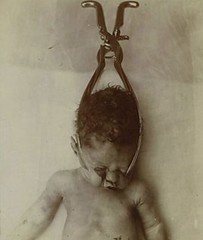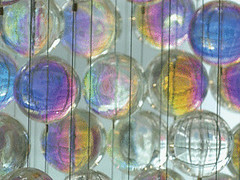The Director’s office of Medical Museion at the University of Copenhagen announced today that the museum will put all its collections on Twitter.
Hundreds of thousands of material artefacts (from electron microscopes to conjoined twins in pickles), tens of thousands of medical historical images, and hundreds of shelf meters of archival documents will be compressed, catalogued and publicly communicated in the Twitter format.
“This is a revolution in museum collection management”, says the Director of Medical Museion, Thomas Söderqvist. “We have considered a number of systems for putting our rich medical historical collections online — but they were either too complicated, or too expensive. Twitter solves all our problems”.
Putting collections on Twitter is simple. Every morning, the Head of Collections, Ion Meyer, will distribute boxes full of artefacts — of all sizes, material composition and age — among the members of staff. After logging into their Twitter accounts, staff will then spend the day ploughing through the boxes and curating the objects in whatever order they are picked up. “We call this stream-of-consciousness-curating”, says Thomas Söderqvist: “It gives the necessary subjective and personal touch to the curatorial work”.
Each item will be described in 140 characters, no more, no less. “This gives an enormous advantage to conventional online cataloguing systems”, explains senior curator Søren Bak-Jensen, who is responsible for new acquisitions. “A lancet gets 140 characters, and so does a PET scanner. In this way all instruments are made equal. This is huge step towards a more democratic acquisition policy”:

Outreach officer Bente Vinge Pedersen sees enormous future possibilities for public engagement with medicine: “The lack of indexing and tagging systems will make a search in our Twitter catalogue so much more exciting”, she says. “It will enhance the surprise effect that all museums want to give their online visitors. When you follow the stream of one of our staff twitters, you will come across the most unexpected items. First a gene chip from 2005, then a syphilitic skull from the 18th century”.
Twittering the collections is a major contribution to Medical Museion’s ambition to foster a sense of immediacy and presence in the public’s relation to the museum collections. Postdoc Jan Eric Olsén sees the decision to go on Twitter as a fantastic opportunity to develop the visual and haptic dimensions of the museum experience: “We all want to touch and gently caress museum objects”, he explains: “Twitter could be turned into a medium for enhancing that special IRL feeling: the smell and the taste of medical objects and especially the tactile experience of being in immediate touch with the physical world around us”.
At today’s staff meeting there was widespread enthusiasm over the initiative. “This is an alternative to old-fashioned crowdsourcing and other outdated museum 2.0 social technologies”, said Monica Lambert, who is responsible for organizing the visitor flow to the museum. “We expect the Multitude to tweet back”, she added: “All visitors will have to show a tweet on their iPhone to prove that they have made a contribution to our collection management”.
Administrator Carsten Holt was enthusiastic too. He is now contemplating to put the budget for 2009 on Twitter, thereby reducing the need for too many numbers. “140 characters is a great opportunity to reduce our budget to the essentials”, he tweeted back.
Head of Exhibitions, Camilla Mordhorst, who will soon leave Medical Museion for a new position as Head of Public Outreach in the Copenhagen City Museum, says she too intends to implement Twitter as a core museum technology, and thereby turn the venerable old city museum into a global village gossip park.
On Thursday 1 April, 2010, Medical Museion’s new Twitter-based collection outreach system will be evaluated by the museum’s international Advisory Board (on Twitter of course).

 My good friend and colleague Jim Edmonson (who is Head of the great
My good friend and colleague Jim Edmonson (who is Head of the great 
 To strengthen their web presence, the people at
To strengthen their web presence, the people at 





 In an interview for the Danish daily Information about his new book
In an interview for the Danish daily Information about his new book